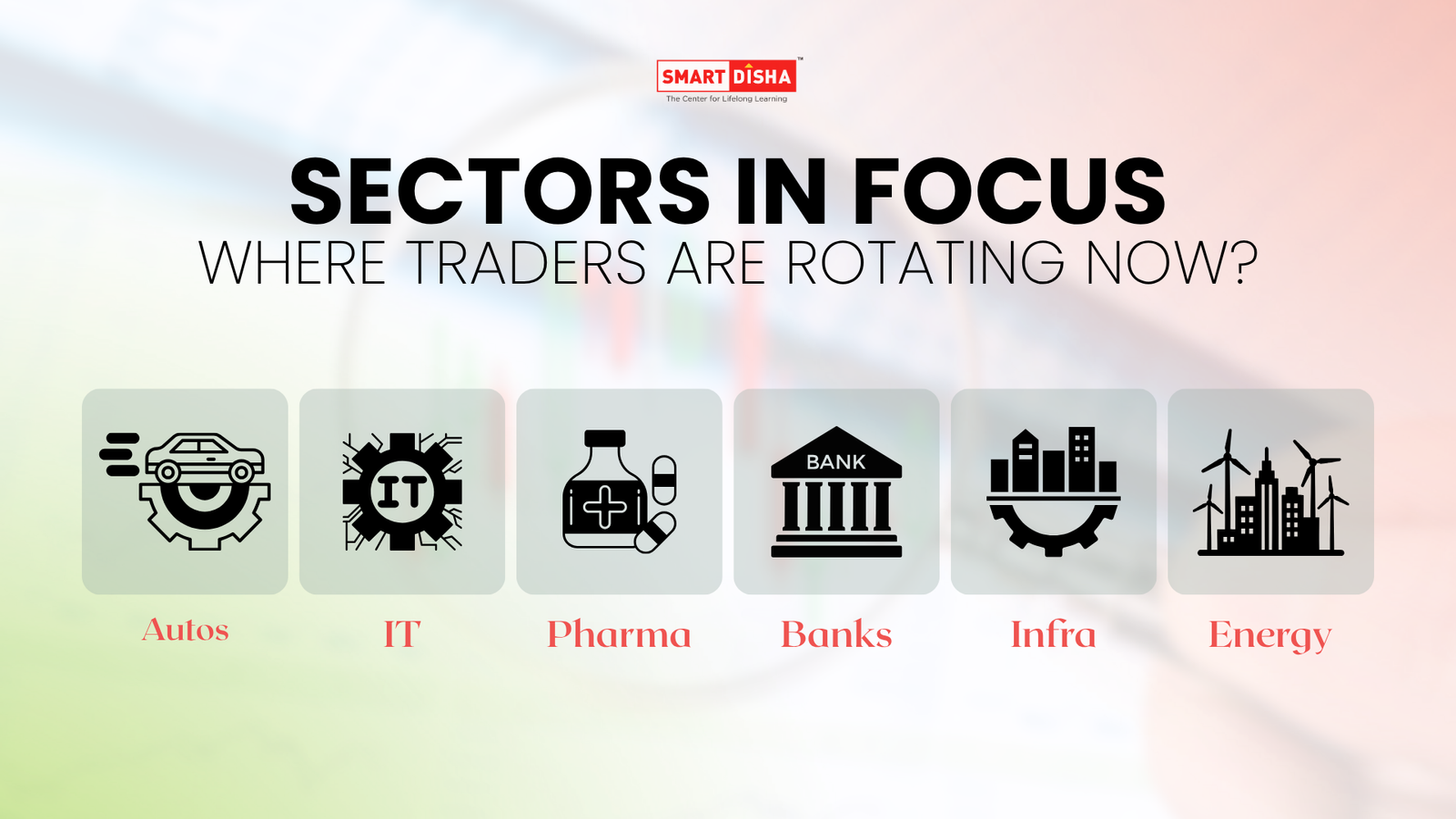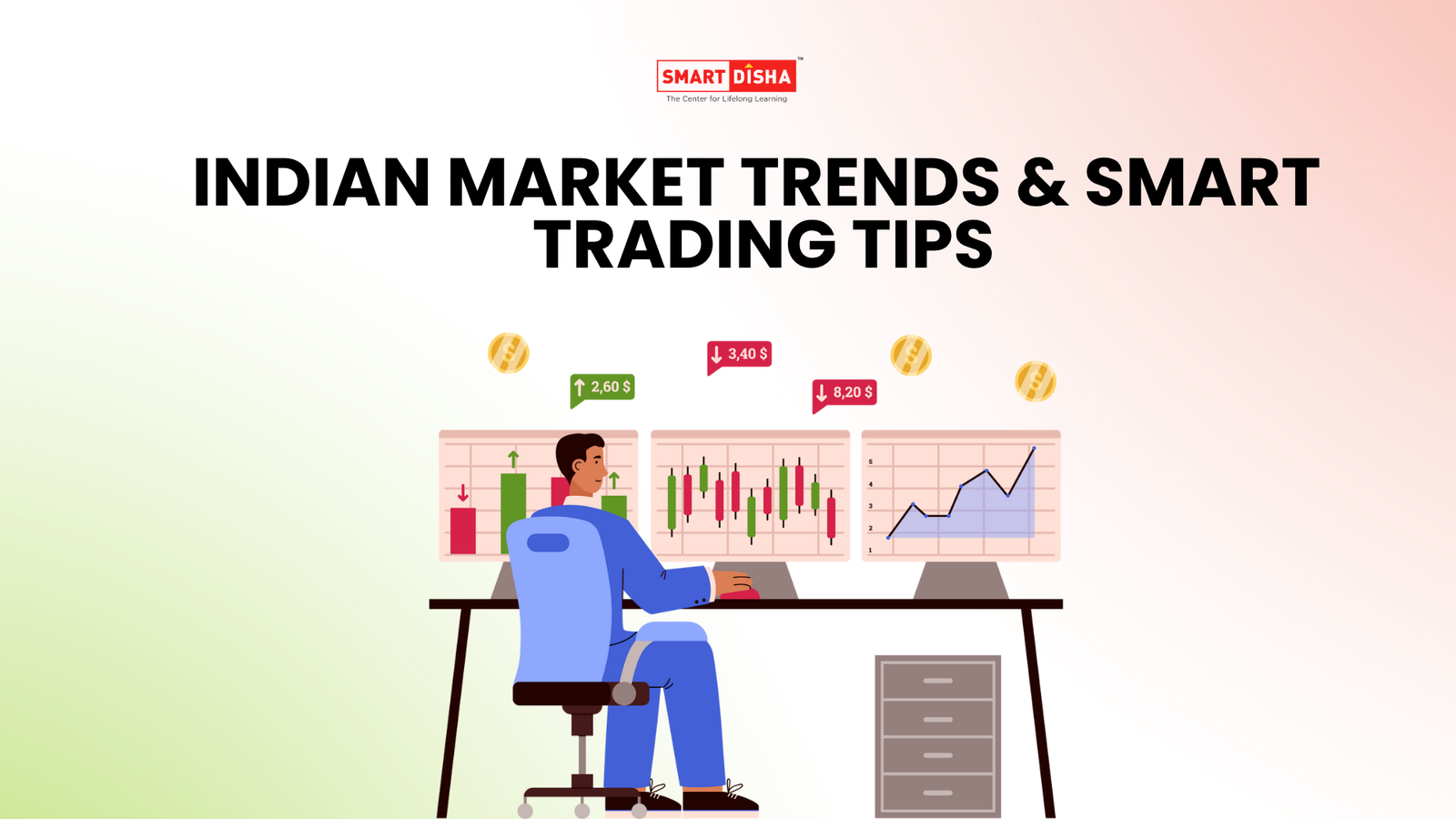The overall market mood has turned noticeably brighter through late September and early October 2025, even after a volatile year. Across India, traders are seeing renewed strength in several stock market sectors, particularly autos, IT, and pharma,, supported by hopes of global rate cuts and improved risk appetite. Banking and capital goods are also regaining traction as domestic cyclicals come back into focus. On the global front, capital is flowing toward technology and financial stock market sectors, which typically benefit first when investors rotate back into risk.
Below is a trader’s perspective on which stock market sectors are currently attracting attention, what’s fueling their momentum, and the key mistakes to avoid while navigating them.
Automobiles and Auto Ancillaries
Why traders are looking here: Autos have led multiple up-days recently, supported by signs of demand recovery and pricing actions. When broader sentiment turns, cyclicals like autos are often first to respond because earnings are sensitive to consumer confidence and financing costs. Reuters+1
What to track:
- Monthly dispatch data and commentary on festive demand.
- Input cost trends (steel, aluminum) and discounting intensity.
- Financing rates and inventory channels.
Trading watchouts: Auto rallies can be sharp but uneven across two-wheelers, PVs, CVs, and suppliers. Treat each sub-segment on its own merits; confirmation via volume and delivery numbers matters more than a single headline.
Information Technology (IT Services)
Why traders are looking here: IT and pharma jointly led a notable push when the U.S. Fed signaled a friendlier path, easing some growth fears and supporting exporters with USD billing. Rate expectations and U.S. macro prints still matter for this basket, but risk appetite clearly improved into mid-September. Reuters
What to track:
- U.S. growth and labor data (impacts client tech spending).
- Deal wins, book-to-bill, and commentary on discretionary projects.
- Currency trends; INR weakness can cushion margins.
Trading watchouts: Avoid treating the group as a monolith. Large caps move on macro; mid-tier IT reacts more to specific deal news. Use levels (prior swing highs, gap zones) and keep position size consistent with results risk.
Pharmaceuticals and Healthcare
Why traders are looking here: As global risk appetite stabilizes, defensives with export linkages, especially pharma, have caught bids alongside IT. Regulatory clearances, product launches, and U.S. pricing commentary remain the near-term catalysts. Reuters
What to track:
- USFDA inspection outcomes and observations.
- New product filings/approvals and complex generics pipeline.
- Margin sustainability amid input and freight costs.
Trading watchouts: Single plant news can swing stocks. Use event-aware risk management and avoid chasing large gaps without a setup.
Banks and Financials
Why traders are looking here: Globally, financials have attracted part of the recent sector inflows; in India, Bank Nifty’s intraday recoveries hint that traders are probing a bottoming setup on select days. Lower-for-longer rate expectations can support multiples if credit growth holds. Reuters+1
What to track:
- Credit growth, NIM trajectory, and deposit costs.
- Asset quality prints (slippages, recoveries).
- Any regulatory or liquidity changes that alter term structure.
Trading watchouts: Private vs PSU banks have very different drivers and volatility profiles. Use relative strength (RS) vs NIFTY/Bank Nifty to filter ideas.
Capital Goods, Industrials, and Infrastructure
Why traders are looking here: When domestic sentiment turns up, traders often rotate toward capex-linked names, engineering, construction, transmission, on expectations of order inflows and execution gains. Even in a tough YTD, these pockets can lead during relief rallies if government capex visibility remains intact. (Cross-check sector dashboards and order announcements before entries.) NSE India
What to track:
- Order wins, book-to-bill, and execution timelines.
- Working capital and margin guidance.
- State and central budget commentary on infra/capex.
Trading watchouts: Results season can flip the script quickly if execution or margins lag. Trail stops; don’t average down on contracting backlogs.
Energy and Utilities (Oil & Gas, Power, Renewables)
Why traders are looking here: Energy has been a swing factor: oil price moves and policy updates ripple through OMCs, gas utilities, power generators, and equipment suppliers. With primary markets buzzing (including green-energy stories) and reform signals around the broader economy, traders scout for trend continuations on strong days. Reuters
What to track:
- Crude and gas benchmarks; marketing margins and GRMs.
- Tariff orders, demand prints, and PLF/load factors in power.
- Project awards in renewables and storage.
Trading watchouts: Global commodity volatility can whipsaw positions. Reduce size ahead of OPEC meetings or major policy days.
IPO-linked Plays (Brokers, Platforms, New-Age Listings)
Why traders are looking here: Primary markets are lively even as benchmarks lag YTD. Big-ticket IPOs across platforms, brokerages, and green energy have kept listing calendars full. Traders are positioning around anchor demand, peer comps, and post listing price discovery. Reuters
What to track:
- DRHP/RHP details: use of proceeds, promoter selling, peer valuation.
- Anchor/QIB subscriptions and pricing discipline.
- Day-1 liquidity and delivery data; stabilization windows.
Trading watchouts: Don’t over-rely on GMP; use it only as a sentiment gauge. Listing-day volatility is high, plan entries, partial exits, and invalidation levels in advance.
Context that still matters
Even with improving tone, India’s 2025 scoreboard has trailed many global peers, weighed down by tariff headlines and soft foreign flows. When foreign portfolio flows are weak or negative, leadership rotates faster and breakouts fail more often. That’s why selectivity and risk control remain crucial even in a better tape. Reuters+1
A simple trading checklist for sector rotation
- Start with data, not buzz. Check which sector indices are actually outperforming the NIFTY on a 1–4 week basis before you pick stocks. The NSE’s index performance pages and sector dashboards help you verify leadership objectively. NSE India
- Look for confluence. Sector strength + stock relative strength + clean levels on the chart (prior swing, base breakout) beats any single indicator.
- Mind the calendar. Results, policy days, and global data (Fed, payrolls, CPI) can flip sector narratives quickly.
- Size like a pro. Keep risk per trade fixed; scale in only if the thesis is playing out.
- Review weekly. If leadership shifts from autos to banks (or IT to pharma), rotate with it, don’t marry sectors.
Bottom line for Smart Disha traders
Right now, autos, IT, pharma, banks/financials, capital-goods/infra, and energy are throwing up the cleaner setups, with IPO-linked names offering short, event driven trades. Leadership will rotate, that’s normal. Your edge is staying objective: track relative strength by sector, align with the dominant trend on your timeframe, size positions with a fixed risk per trade, and be willing to step aside when the data turns
If you want a tighter process sector dashboards to spot rotation early, a simple ruleset for entries/exits, and a weekly review routine, learn it the right way. Join our next cohort at Smart Disha Academy, the stock market academy in Ahmedabad, and build a repeatable approach you can actually stick to




